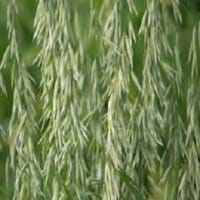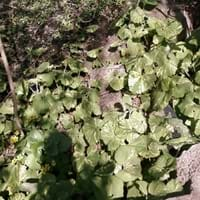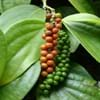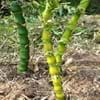Life Span
Annual
Perennial
Origin
Hybrid origin, Europe
China, Japan, Korea
Types
Not Available
Not Available
Habitat
Farms
gardens, Grassland, Homesteads, Open areas
USDA Hardiness Zone
Not Available
5-9
Sunset Zone
1a, 1b, 2a, 2b, 3a, 3b, 4, 5, 6, 7, 8, 9, 14, 15, 16, 17, 18, 19, 20, 21, 22, 23, 24
2a, 2b, 3a, 3b, 4, 5, 6, 7, 8, 9, 10, 14, 15, 16, 17, 18, 19, 20, 21, 22, 23, 24
Habit
Clump-Forming
Clump-Forming
Flower Color
Green, Light Green
Light Yellow, Ivory
Flower Color Modifier
Bicolor
Bicolor
Fruit Color
Not Available
Not Available
Leaf Color in Spring
Light Green, Gray Green
Green, Light Green, Light Yellow, Ivory
Leaf Color in Summer
Light Green
Green, Light Yellow, Ivory
Leaf Color in Fall
Light Green, Yellow green, Gold
Green, Light Yellow, Ivory
Leaf Color in Winter
Not Available
Not Available
Plant Season
Not Available
Spring, Summer, Fall
Sunlight
Full Sun
Partial shade, Full Shade
Type of Soil
Loam
Clay, Loam, Sand
The pH of Soil
Neutral
Acidic, Neutral, Alkaline
Soil Drainage
Well drained
Poorly Drained
Bloom Time
Late Spring, Early Summer
Early Spring, Late Winter
Tolerances
Not Available
Wet Site
Where to Plant?
Ground
Ground, Pot
How to Plant?
Seedlings
Divison, Stem Planting
Plant Maintenance
Medium
Medium
Watering Requirements
Requires a lot of watering, Requires watering in the growing season
Allow soil to be completely dry in between waterings, Keep ground moist, Needs 2-3 times watering per week, Over-head watering, Requires watering in the growing season
In Summer
Lots of watering
Lots of watering
In Spring
Moderate
Moderate
In Winter
Average Water
Average Water
Soil pH
Neutral
Acidic, Neutral, Alkaline
Soil Type
Loam
Clay, Loam, Sand
Soil Drainage Capacity
Well drained
Poorly Drained
Sun Exposure
Full Sun
Partial shade, Full Shade
Pruning
Remove damaged leaves, Remove dead branches, Remove dead leaves
Remove deadheads, Requires very little pruning, Shape and thin as needed
Fertilizers
All-Purpose Liquid Fertilizer
All-Purpose Liquid Fertilizer
Pests and Diseases
Red blotch
Pests and diseases free, Red blotch
Plant Tolerance
Drought
Wet Site
Flowers
Insignificant
Showy
Flower Petal Number
Single
Not Available
Foliage Texture
Fine
Bold
Foliage Sheen
Glossy
Glossy
Attracts
Not Available
Not Available
Allergy
no allergic reactions
no allergic reactions
Aesthetic Uses
Not Used For Aesthetic Purpose
Showy Purposes
Beauty Benefits
Not Available
Not Available
Environmental Uses
Air purification
Air purification
Medicinal Uses
Menstrual Disorders, osteoporosis, Urinary tract problems
No Medicinal Use
Part of Plant Used
Whole plant
Whole plant
Other Uses
Culinary use, Used for pasture
Not Available
Used As Indoor Plant
No
Yes
Used As Outdoor Plant
Yes
Yes
Garden Design
Edible
Bog Garden, Container, Feature Plant, Water Gardens
Botanical Name
AVENA sativa
PETASITES japonicus 'Variegatus'
Common Name
Oat
Giant Butterbur, Japanese Butterbur, Variegated Butterbur
In Hindi
जई
variegated butterbur
In German
Haferpflanze
bunte Pestwurz
In French
Plantes d'avoine
pétasite panachée
In Spanish
planta de avena
butterbur abigarrado
In Greek
φυτό βρώμη
διαφοροποιημένα butterbur
In Portuguese
aveia planta
butterbur variegada
In Polish
Owies roślin
barwny Lepiężnik
In Latin
Oat plant
varius butterbur
Phylum
Tracheophyta
Not Available
Class
Liliopsida
Not Available
Family
Poaceae
Asteraceae
Clade
Angiosperms, Commelinids, Monocots
Angiosperms, Asterids, Eudicots
Tribe
Aveneae
Senecioneae
Subfamily
Pooideae
Not Available
Number of Species
Not Available
Importance of Oat plant and Variegated Butterbur
Want to have the most appropriate plant for your garden? You might want to know the importance of Oat plant and Variegated Butterbur. Basically, these two plants vary in many aspects. Compare Oat plant and Variegated Butterbur as they differ in many characteristics such as their life, care, benefits, facts, etc. Every gardener must at least have the slightest clue about the plants he wants to plant in his garden. Compare their benefits, which differ in many ways like facts and uses. The medicinal use of Oat plant is Menstrual Disorders, osteoporosis and Urinary tract problems whereas of Variegated Butterbur is No Medicinal Use. Oat plant has beauty benefits as follows: Not Available while Variegated Butterbur has beauty benefits as follows: Not Available.
Compare Facts of Oat plant vs Variegated Butterbur
How to choose the best garden plant for your garden depending upon its facts? Here garden plant comparison will help you to solve this query. Compare the facts of Oat plant vs Variegated Butterbur and know which one to choose. As garden plants have benefits and other uses, allergy is also a major drawback of plants for some people. Allergic reactions of Oat plant are no allergic reactions whereas of Variegated Butterbur have no allergic reactions respectively. Having a fruit bearing plant in your garden can be a plus point of your garden. Oat plant has showy fruits and Variegated Butterbur has no showy fruits. Also Oat plant is not flowering and Variegated Butterbur is not flowering . You can compare Oat plant and Variegated Butterbur facts and facts of other plants too.





